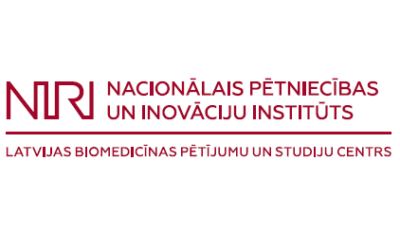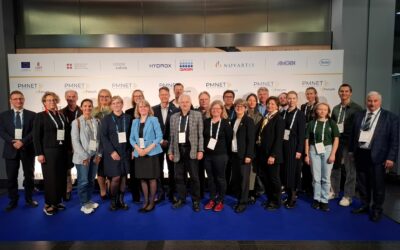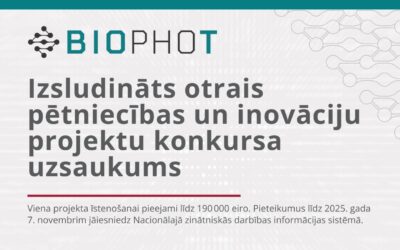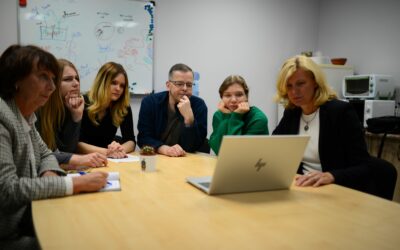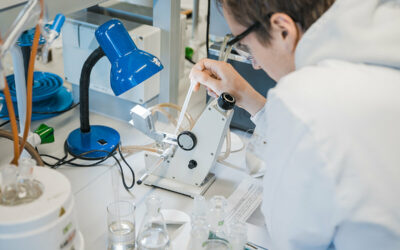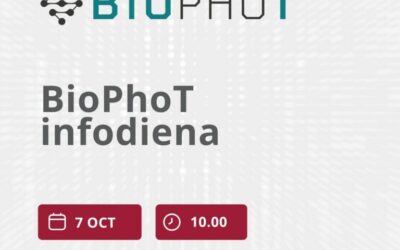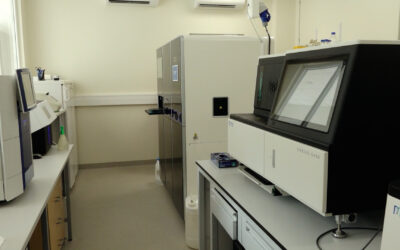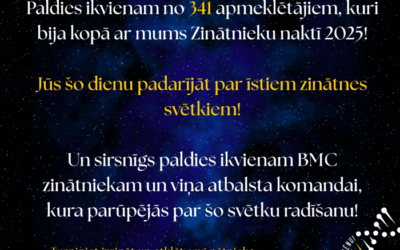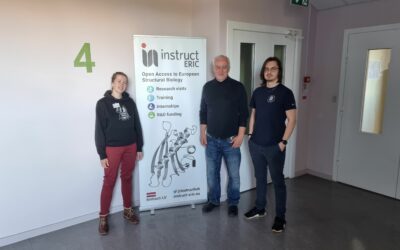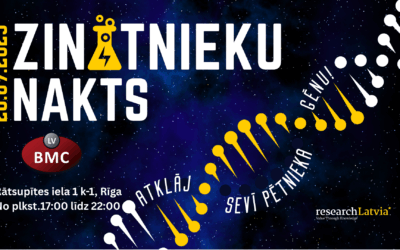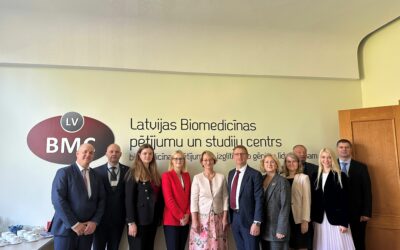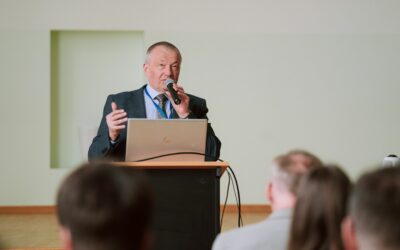Jaunumi
Apvienojas divi vadošie Latvijas zinātņu institūti
Šodien, 14. oktobrī Latvijas Ministru kabinets pieņēma vēsturisku lēmumu, apstiprinot Nacionālā pētniecības un inovāciju institūta (NIRI) - Eiropas mēroga dzīvības un dabas zinātņu centra - izveidošanu Latvijā. Jaunais institūts apvienos Latvijas Organiskās sintēzes...
BBMRI-ERIC pārstāvju vizīte Latvijā Precīzijas medicīnas PMNET foruma ietvaros
2025. gada 10. oktobrī, Precīzijas medicīnas (PMNET) foruma ietvaros, Latvijā viesojās Eiropas Biobanku infrastruktūras BBMRI-ERIC ģenerāldirektors Jens Habermann un sabiedrisko attiecību vadītāja Jana Pavlic-Zupanc. Vizītes mērķis bija stiprināt sadarbību starp...
Izsludināts otrais pētniecības un inovāciju projektu konkursa uzsaukums
6. oktobrī izsludināts otrais pētniecības platformas “Biomedicīnas un fotonikas pētniecības platforma inovatīvu produktu radīšanai” (“BioPhoT”) pētniecības un inovāciju projektu (PIP) konkursa uzsaukums. Šajā uzsaukumā zinātniekiem indikatīvi pieejami 4,826,110 eiro,...
FLUID-C projekts iegūst finansējumu platformas “BioPhoT” projektu pirmās kārtas konkursā
2025. gada 1. oktobrī tika uzsākts realizēt projektu “Funkcionāls šķidro biopsiju tests audzēju diagnostikai un novērošanai” (FLUID-C), kurš saņēma finansējumu no valsts pētījumu programmas «Biomedicīnas un fotonikas pētniecības platforma inovatīvu produktu radīšanai»...
Monta Brīvība: Labāk ir zināt, ar ko tev jārēķinās
Bioloģijas zinātņu doktore, Latvijas biomedicīnas pētījumu un studiju centra pētniece un Genoma centra sekvencēšanas daļas vadītāja Monta Brīvība ir viena no trim Latvijas zinātniecēm, kas ieguvusi šā gada Baltijas valstu stipendija sievietēm zinātnē. Tā piešķirta par...
Aicina pieteikties ERAF doktorantūras grantu otrajam konkursam
Students Latvijas Universitātes Ķīmijas fakultātes laboratorijā. Foto: Toms Grīnbergs, Latvijas Universitāte Izsludināts Latvijas Universitātes (LU) Eiropas Reģionālā attīstības fonda doktorantūras grantu otrais konkurss, kurā ir aicināti piedalīties doktoranti, kuru...
“BioPhoT” 2. uzsaukuma infodiena
Infodiena potenciālajiem projektu pieteicējiem pasākums par “BioPhoT” konkursu un tā nolikumu un par izmaiņām pētniecības un inovāciju projektu pieteikšanā un vērtēšanā. BioPhoT aicina uz 2. uzsaukuma infodienu OSI Lielajā zālē š.g. 7. oktobrī no 10.00 līdz 12.00....
Izveidota Latvijas iedzīvotāju genoma reference
Ģenētika nosaka, cik stipra būs mūsu veselība, kā arī – vai un ko pārmantosim no iepriekšējām paaudzēm. Taču svarīga ir ne vien mūsu individuālā ģenētika, bet arī tas, kāds ir lielākas populācijas genoms. To izzinot, varēs veiksmīgāk noteikt slimību ģenētiskos...
Zinātnieku naktī BMC apmeklē 341 interesents
Vēlamies teikt lielu paldies visiem mūsu Zinātnieku nakts apmeklētājiem! Jūs Zinātnieku Nakti 2025 padarījāt par īstiem zinātnes svētkiem! Kā arī pateicība mūsu zinātniekiem, ka radīja tik brīnišķīgu pasākumu, kurš aizrāva kā lielus tā mazus. Ļāva ielūkoties...
INSTRUCT-Eric uzņem viesus no Igaunijas
2025. gada 24. septembrī BMC viesojās Tartu universitātes pētniece Kristiina Vind kopā ar savu latviešu izcelsmes doktorantu Normundu Bērziņu. Kopīgā seminārā ar BMC struktūrbioloģijas grupas zinātniekiem tika apspriesti dažādi, ar bakteriofāgiem un to vīrusveidīgajām...
M.Brīvība kļūst par prestižās “Baltijas stipendijas sievietēm zinātnē” laureāti
Trīs Latvijas pētnieces 2025. gadā kļūst par prestižās “Baltijas stipendijas sievietēm zinātnē” laureātēm Latvijā par konkursa “Baltijas stipendija sievietēm zinātnē 2025” laureātēm kļuvušas trīs jaunās pētnieces – Ph. D. Monta Brīvība, Ph. D. Jana Kukaine un Mg....
Zinātnieku nakts 2025 jau šajā piektdienā!
Šogad Zinātnieku naktī tradicionālām izzinošām aktivitātēm pievienosies arī pulks jaunu, aizraujošu aktivitāšu. Ikviens interesents varēs iepazīties ar senās DNS noslēpumiem un izmēģināt vienkāršas metodes DNS izdalīšanā no paša izvēlēta bioloģiskā materiāla. Savukārt...
Gatavojoties divu vadošo zinātnes institūtu apvienošanai – abus apciemo Izglītības un zinātnes ministre Dace Melbārde
Piektdien, 19. septembrī, Latvijas Organiskās sintēzes institūtā un Latvijas Biomedicīnas pētījumu un studiju centrā viesojās Izglītības un zinātnes ministre, Dace Melbārde. Ņemot vērā, ka nākamā gada 30. maijā abi institūti sāks darbu kā vienota organizācija,...
Latvijas zinātnieku idejām zaļā gaisma – 40 projekti saņem 8 miljonus eiro
Foto: Guntis Bērziņš Noslēdzoties pirmā pētniecības un inovāciju projektu konkursa izvērtēšanas procesam, platformas “Biomedicīnas un fotonikas pētniecības platforma inovatīvu produktu radīšanai” (“BioPhoT”) ietvaros turpmākai realizēšanai izvēlēti 40 projekti. Tie...
Prezentācijas prasmju apmācības
Projekta prezentācija ir viena no galvenajām BioPhoT konkursu atlases prasībām – labas prasmes var būtiski palielināt izredzes saņemt finansējumu. Prezentācijas prasmju apmācības paredzētas, lai apgūtu prasmes komunicēt sarežģītu informāciju 5 minūtēs un kā...


